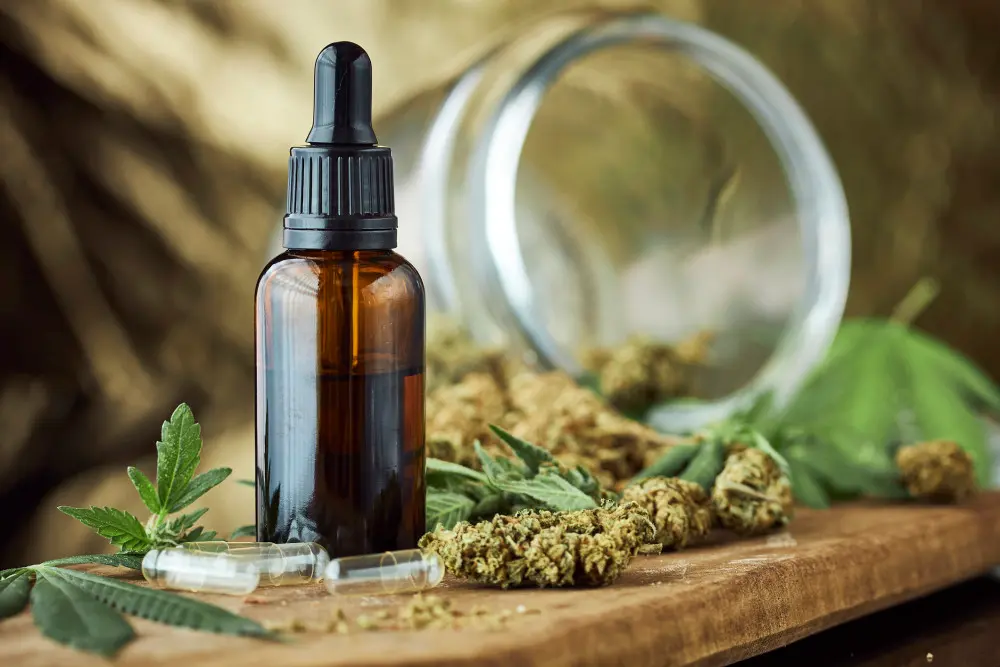Health
The Role of a Periodontist in Treating Advanced Gum Disease

Gum health plays a role in maintaining overall oral health. When gum disease progresses to an advanced stage, managing it may require specialized care. This is where a periodontist comes in. A periodontist focuses on diagnosing and managing periodontal (gum) diseases and associated conditions, particularly when they reach a severe stage. Understanding the role of a periodontist can provide clarity on the path to improved oral health.
What Is a Periodontist?
A periodontist is a dental specialist who focuses on preventing, diagnosing, and treating issues related to the gums and other supporting structures of the teeth. They undergo additional training after general dentistry to gain expertise in addressing more complex periodontal conditions. While general dentists manage early gum disease, periodontists are often referred to when the disease advances and requires specialized treatment or surgical intervention. Their specialized knowledge allows them to manage conditions that involve significant gum damage, bone deterioration, or complex infections. They are also skilled in procedures such as periodontal surgery, bone regeneration techniques, and dental implant placement, further expanding their role in maintaining oral functionality and health.
What Are the Challenges With Advanced Gum Diseases?
Advanced gum disease, known as periodontitis, extends beyond simple gum inflammation. The condition often involves deep pockets forming between the teeth and gums, leading to bacterial infections, gum recession, and even bone loss. If untreated, periodontitis may result in loose teeth or tooth loss, severely impacting oral health and function. Periodontal treatments in advanced cases require precise intervention, tailored solutions, and ongoing care.
Treatment Approaches Used by a Periodontist
Periodontists may employ various techniques for managing advanced gum disease. Treatment plans can vary based on the severity of the condition, the patient’s overall health, and oral anatomy. Common approaches a periodontist may consider include:
- Scaling and Root Planing: This deep cleaning treatment removes plaque and tartar build-up below the gum line and smoothens the root surface. It can reduce pocket depth and eliminate bacteria contributing to the infection.
- Gum Graft Surgery: For cases involving significant gum recession, a periodontist may recommend gum graft surgery to restore gum tissue and protect tooth roots from further exposure.
- Bone Grafting: When bone loss occurs due to gum disease, a periodontist may use bone grafting techniques to regenerate bone and improve stability in the affected area.
- Laser Therapy: Some periodontists may incorporate laser technology to target infected tissue and reduce inflammation effectively, promoting faster healing times.
Preventative Techniques and Long-Term Management
The work of a periodontist does not end after treating advanced gum issues. Long-term management is key to prevent recurrence and further damage. A periodontist may recommend ongoing maintenance through professional cleanings, regular periodontal evaluations, and oral hygiene practices. They also collaborate closely with general dentists to develop comprehensive plans for each patient. This team-based approach can result in consistent care and enhance overall effectiveness.
Beyond their technical expertise, periodontists may establish professional relationships that help patients feel supported throughout their treatment journeys. This patient-support relationship fosters consistency in care and genuine trust. Periodontists also emphasize education, equipping patients with knowledge about gum health, potential risk factors, and techniques to maintain gum health at home.
Take Action with Specialized Gum Care
If you’re dealing with advanced gum disease symptoms, seeking care is a step toward reclaiming your oral health. With specialized training and expertise, they can provide the targeted treatment necessary to manage and overcome complex periodontal conditions. Explore your care options today by reaching out to a knowledgeable periodontist who can develop a personalized plan suited to your needs.
Health
PCV Oil Catch Can 2007 Ford F150 5.4LIT– Complete Guide

Introduction
If you drive a 2007 Ford F-150 with the 5.4L engine, you know it’s a reliable truck. It’s tough, powerful, and built for work or family use. But like any vehicle, it has weak spots. One of those is the buildup of oil vapors in the intake system.
This is where a PCV oil catch can comes in. Installing a catch can on your 2007 Ford F-150 5.4L helps reduce carbon buildup, keeps the intake cleaner, and improves long-term performance. Many truck owners overlook this upgrade, but it can make a big difference in engine health.
In this guide, we’ll explain what a PCV oil catch can does, why it’s important, and how you can install and maintain one. We’ll also share real owner experiences, common mistakes, and practical tips to help you get the most out of your Ford.
What Is a PCV Oil Catch Can?
A PCV oil catch can is a small device connected to your truck’s positive crankcase ventilation (PCV) system. The PCV system takes gases and oil vapors from inside the engine and routes them back into the intake. This helps reduce emissions.
The problem is that along with air, the system pulls in tiny oil droplets. Over time, those droplets build up inside the intake manifold and throttle body. This can lead to carbon deposits, sticky valves, and reduced performance.
The oil catch can solves this problem. It traps those oil vapors before they reach the intake. Clean air flows through, but oil and gunk get caught in the can. That means less buildup, a cleaner engine, and longer life for your 5.4L motor.
Why Your 2007 Ford F-150 5.4L Needs One
The 2007 Ford F-150 with the 5.4L Triton V8 is known for power, but it also has issues with carbon buildup. Over time, oil deposits in the intake can cause rough idling, hesitation, and even loss of horsepower.
Installing a PCV oil catch can helps reduce these problems. It keeps the air going into your engine cleaner, which means smoother combustion. Owners often report that their trucks run better, idle smoother, and even get a small bump in fuel economy.
Another reason your F-150 needs a catch can is longevity. When your intake valves stay clean, your engine doesn’t have to work as hard. That reduces wear and tear, which helps your truck last longer. For a vehicle as valuable as a Ford F-150, this is a smart investment.
How the PCV System Works in Your Truck
To understand why a catch can matters, it helps to know how the PCV system works.
When your engine runs, pressure builds inside the crankcase. Without a way to vent it, that pressure could damage seals or cause leaks. The PCV valve solves this by allowing gases and vapors to escape. These gases are sent back into the intake so they can be burned again.
On paper, this is a good system. It reduces emissions and keeps your engine efficient. But it’s not perfect. Oil mist often rides along with the gases. In a 2007 F-150 5.4L, this oil mist can collect on intake valves, spark plugs, and sensors. That’s where a pcv oil catch can 2007 ford f150 5.4lit can makes a big difference by filtering out that unwanted oil.
Common Problems Without an Oil Catch Can
If you don’t use a catch can, your 2007 Ford F-150 5.4L may develop several issues over time:
-
Carbon buildup on intake valves
-
Reduced performance and sluggish acceleration
-
Poor fuel economy due to dirty combustion
-
Check engine lights from fouled sensors
-
Oil pooling inside the intake manifold
Some owners even report having to clean their intake system more often, which costs time and money. The Triton V8 is strong, but like many engines, it doesn’t like running on dirty air. That’s why an oil catch can is a smart preventative step.
Benefits of Installing a Catch Can on a 5.4L Engine
Adding a PCV oil catch can to your 2007 Ford F-150 5.4L brings several clear benefits:
-
Cleaner intake system – Less carbon buildup means smoother airflow.
-
Better fuel economy – Cleaner combustion helps you get more miles per gallon.
-
Longer engine life – Reducing gunk protects valves and pistons.
-
Improved performance – Many owners feel better throttle response.
-
Lower maintenance costs – Fewer cleanings and fewer repairs over time.
Think of it like a filter for your engine’s breathing system. You wouldn’t drive without an air filter, so why let oil mist clog up your intake?
Choosing the Right Oil Catch Can for Your Ford F-150
Not all oil catch cans are the same. When shopping for one, look for these features:
-
Quality materials: Aluminum cans last longer than plastic ones.
-
Baffled design: Helps trap more oil and vapors.
-
Easy drain system: A drain valve makes emptying faster.
-
Direct fit kits: Some are made specifically for Ford F-150 trucks.
Popular brands among F-150 owners include JLT, Mishimoto, and UPR. While universal catch cans are cheaper, a kit designed for the 2007 F-150 5.4L will fit better and look cleaner under the hood.
Step-by-Step Guide to Installing a Catch Can
Installing a catch can on your 2007 Ford F-150 5.4L is a straightforward project. Here’s a simple guide:
-
Locate the PCV hose – It usually runs from the valve cover to the intake.
-
Remove the hose – Gently disconnect it from both ends.
-
Mount the catch can – Find a secure spot in the engine bay.
-
Connect new hoses – Route one from the PCV valve to the can, and another from the can to the intake.
-
Secure with clamps – Make sure everything is tight and leak-free.
-
Check for clearance – Ensure hoses don’t rub against moving parts.
Most installs take about an hour with basic tools. If you’re not comfortable, any mechanic can do it quickly.
Maintenance Tips for Long-Lasting Performance
A catch can is low-maintenance, but it does need attention. Here’s how to keep it working:
-
Empty the can regularly – Every 1,000–3,000 miles, depending on driving style.
-
Check hoses and fittings – Make sure nothing is loose.
-
Clean the can – Wipe out residue every few oil changes.
-
Monitor oil levels – A catch can won’t affect your dipstick reading much, but always double-check.
With regular care, your oil catch can will keep protecting your Ford F-150 for years.
Real-World Results: Owners’ Experiences
Many 2007 Ford F-150 5.4L owners who install a catch can report positive results. Common feedback includes:
-
Noticeably cleaner intake manifolds during inspections
-
Less oil smell in the engine bay
-
Improved throttle response and smoother idling
-
Longer intervals between needing intake cleanings
One owner even mentioned that after installing a catch can at 100,000 miles, his truck’s idle became steadier, and spark plugs lasted longer than before. Real-world use proves that catch cans aren’t just hype they deliver results.
Mistakes to Avoid When Using a Catch Can
While catch cans are helpful, there are a few common mistakes:
-
Not emptying it – A full can can’t catch more oil.
-
Poor mounting – Loose cans may rattle or cause leaks.
-
Cheap hoses – Weak hoses can collapse under vacuum pressure.
-
Wrong routing – Reversing the hoses means it won’t work properly.
Avoiding these mistakes ensures your catch can does its job correctly and keeps your F-150 running strong.
Cost vs. Value: Is It Worth It?
A quality oil catch can costs between $100–$200, plus installation if you don’t DIY. That may sound like a lot for a small part, but consider the savings:
-
Intake cleanings can cost $300+
-
Repairs for fouled valves or sensors can cost even more
-
Better fuel economy saves money at the pump
When you look at it this way, a catch can is an affordable insurance policy for your 2007 Ford F-150 5.4L.
Alternatives to Oil Catch Cans (and Why They Fall Short)
Some people ask if fuel additives or regular cleanings can replace a catch can. While these help, they don’t stop oil from entering the intake in the first place. Additives may clean some buildup, but prevention is better.
Another alternative is deleting the PCV system, but this isn’t recommended. It can cause pressure issues, oil leaks, and even legal problems since it removes an emissions system.
In short, nothing replaces the consistent protection of a well-installed oil catch can.
Frequently Asked Questions
1. What does a PCV oil catch can do for my Ford F-150?
It traps oil vapors before they reach your intake, keeping it cleaner and improving performance.
2. Will installing a catch can void my warranty?
No, a catch can doesn’t harm your engine. It’s a simple add-on. Still, always check with your dealer.
3. How often should I empty my oil catch can?
Most owners empty it every 1,000–3,000 miles, but it depends on driving conditions.
4. Is a catch can hard to install on a 2007 F-150 5.4L?
Not at all. Most people can install one with basic tools in about an hour.
5. What’s the best oil catch can brand for Ford trucks?
Popular brands include Mishimoto, JLT, and UPR. Choose one designed for your F-150.
6. Can I drive without a catch can?
Yes, but you’ll likely face more carbon buildup and intake cleaning over time.
Conclusion
Your 2007 Ford F-150 5.4L is built tough, but even tough engines need a little extra care. A PCV oil catch can is a simple, affordable upgrade that protects your intake system, improves performance, and extends engine life.
By catching oil before it causes buildup, you save time, money, and headaches down the road. Whether you’re hauling, commuting, or just enjoying your truck, an oil catch can helps it run cleaner and stronger.
If you haven’t installed one yet, now’s the time. Protect your Ford, keep it running like new, and enjoy every mile with confidence.
Health
When Were Lobotomies Made Illegal? A Deep Dive Into History, Science, and Ethics

Introduction
If you’ve ever wondered, “When were lobotomies made illegal?”, you’re not alone. The lobotomy is one of the most shocking and controversial procedures in medical history. Once seen as a miracle cure for mental illness, it later became a symbol of medical overreach and ethical failure.
This article takes you on a journey through the origins of lobotomies, why doctors thought they worked, the painful stories behind them, and how the world finally turned against the practice. We’ll explore not just when lobotomies were made illegal, but also why they fell out of favor, what replaced them, and what lessons we can learn today.
So grab a cup of coffee, sit back, and let’s uncover the truth about this dark yet fascinating chapter of medicine.
What Exactly Is a Lobotomy?
A lobotomy is a surgical procedure where doctors cut or damage parts of the brain’s frontal lobes. The idea was simple: if mental illness came from overactive brain circuits, then damaging those circuits might “calm” the patient.
The procedure became popular in the 1930s and 1940s. Portuguese neurologist António Egas Moniz developed the first version, earning him the 1949 Nobel Prize. Soon after, American psychiatrist Walter Freeman made lobotomies famous in the United States with his faster, cheaper “ice-pick” method.
At first, lobotomies were hailed as groundbreaking. Patients who had been locked away in asylums sometimes appeared calmer afterward. But the results came at a terrible cost personality changes, permanent disability, and in many cases, death.
Why Did Doctors Think Lobotomies Were Helpful?
Back then, mental illness treatments were limited. There were no antidepressants, no modern therapy, and very few effective medications. Asylums were overcrowded, and families were desperate.
Lobotomies promised a quick solution. Patients who had been violent or distressed often became quiet. To doctors in the mid-20th century, this seemed like success. In fact, thousands of lobotomies were performed in the U.S., especially in state hospitals.
However, what doctors saw as “calm” was often just a loss of personality, independence, and cognitive function. Families noticed their loved ones came back “different” sometimes childlike, emotionless, or unable to care for themselves.
This gap between medical hope and human suffering is one reason the world later asked: when were lobotomies made illegal?
The Rise of the Ice-Pick Lobotomy
Walter Freeman was not a surgeon but a psychiatrist. Still, he popularized the transorbital lobotomy, also known as the “ice-pick” method. With an actual ice-pick-like tool, Freeman would push through the eye socket into the brain, severing connections.
He performed the procedure in his office, in hospitals, and even on tours across America. Freeman believed lobotomies could treat depression, schizophrenia, anxiety, and even simple nervousness.
At the peak of the lobotomy craze, nearly 40,000 Americans underwent the procedure. Some were willing, others were not. Even children were lobotomized. One of the most famous cases was Rosemary Kennedy, sister of President John F. Kennedy, whose lobotomy left her severely disabled for life.
The Turning Point: When Public Opinion Shifted
The tide began to turn in the 1950s. Several key developments changed how people viewed lobotomies:
-
Tragic outcomes became known – Stories of patients who were permanently harmed began to spread.
-
Medical ethics improved – Doctors faced more accountability for experimental treatments.
-
New medications appeared – Antipsychotic drugs like chlorpromazine offered safer, non-surgical alternatives.
By the 1960s, lobotomies were widely criticized. Journalists, families, and even other doctors spoke out. The question of when were lobotomies made illegal became urgent, as governments debated whether to ban the practice outright.
So, When Were Lobotomies Made Illegal?
Here’s the surprising truth: lobotomies were never officially banned in every country at the same time. Instead, their use declined gradually due to public outrage and better treatments.
-
United States: Lobotomies largely ended in the late 1960s and 1970s. No federal law banned them outright, but medical standards made the practice unacceptable.
-
United Kingdom: The Mental Health Act of 1983 required special permission for psychosurgery, effectively ending lobotomies.
-
Other countries: Most European nations phased out lobotomies between the 1970s and 1980s, though some procedures lingered.
So, the answer to “When were lobotomies made illegal?” is complex. They weren’t suddenly outlawed everywhere, but instead became seen as unethical, dangerous, and outdated.
The Role of Medication in Ending Lobotomies
One of the biggest reasons lobotomies disappeared was the rise of psychiatric drugs. In the 1950s, medications like Thorazine (chlorpromazine) gave doctors new ways to treat severe mental illness.
These drugs didn’t require surgery, didn’t cause brain damage, and were much safer overall. Hospitals quickly adopted them, and lobotomy numbers dropped. Patients who might once have been operated on now received medication and therapy instead.
This shift shows how medical progress can save lives. The introduction of better treatments answered the question not just of when lobotomies were made illegal, but why they became unnecessary.
Famous Cases That Changed Public Perception
The tragic story of Rosemary Kennedy is perhaps the most famous lobotomy case. Her surgery in 1941 left her permanently incapacitated, shocking the Kennedy family and later the public.
Other notable cases included celebrities like playwright Tennessee Williams’ sister, Rose, who also underwent a lobotomy. Countless unnamed patients in psychiatric hospitals suffered the same fate.
These personal stories fueled outrage. They made people realize lobotomies were not a miracle cure but a risky experiment on vulnerable people. By the 1970s, the pressure to stop lobotomies grew stronger than ever.
The Ethical Lessons of Lobotomies
The story of lobotomies isn’t just medical history it’s also a lesson in ethics. Doctors once thought they were helping, but their methods caused harm. Patients often couldn’t give informed consent, and many procedures were done without full understanding of the risks.
Today, medical ethics emphasize patient rights, informed consent, and evidence-based treatments. The painful question of when lobotomies were made illegal reminds us why these rules are so important.
Are Lobotomies Still Performed Today?
In most of the world, lobotomies are no longer performed. However, a modern and very different procedure called psychosurgery still exists in rare cases. For example, deep brain stimulation or cingulotomy may be used to treat severe, treatment-resistant conditions like OCD.
These modern surgeries are highly controlled, ethical, and performed only when all other treatments fail. They are nothing like the crude lobotomies of the past.
So while lobotomies as we know them are gone, their history continues to shape how medicine approaches mental health.
What Replaced Lobotomies in Mental Health Care?
The end of lobotomies didn’t mean the end of treatment. Instead, mental health care expanded in healthier ways:
-
Medication: Antidepressants, antipsychotics, and mood stabilizers became standard.
-
Therapy: Talk therapy, cognitive-behavioral therapy (CBT), and family counseling grew popular.
-
Community care: Many patients left large institutions for outpatient and community-based support.
This new approach gave people dignity, choice, and better results. It shows why asking when lobotomies were made illegal is really about understanding how far mental health care has come.
The Cultural Impact of Lobotomies
Lobotomies left a mark not just on medicine but on culture. Books, movies, and documentaries often reference them as symbols of medical cruelty. One Flew Over the Cuckoo’s Nest is one of the most famous examples, showing the lobotomy as a punishment for nonconformity.
These cultural portrayals kept public memory alive, ensuring lobotomies would not quietly fade into history. Instead, they became a cautionary tale about the dangers of unchecked medical power.
Lessons for Today’s Mental Health Care
Looking back, the lobotomy era teaches us several lessons:
-
Desperation can lead to risky solutions.
-
New treatments must be tested carefully before being widely adopted.
-
Patient rights should always come first.
-
Hope should never replace evidence.
These lessons help guide today’s medical professionals. They remind us that when we ask when lobotomies were made illegal, we’re also asking how to prevent similar mistakes in the future.
FAQs About Lobotomies
1. When were lobotomies made illegal in the United States?
They were never formally outlawed nationwide but fell out of practice by the late 1960s–1970s due to ethical concerns and better treatments.
2. Did any country officially ban lobotomies?
Yes, some countries placed strict legal restrictions. For example, the UK’s Mental Health Act of 1983 required approval before psychosurgery.
3. How many people had lobotomies?
Around 40,000 in the United States and more than 50,000 worldwide underwent lobotomies before the practice ended.
4. Did lobotomies ever actually work?
Some patients became calmer, but most suffered severe side effects, including personality loss, disability, or death.
5. Are lobotomies and psychosurgery the same thing?
No. Lobotomies were crude brain cuts, while modern psychosurgery uses advanced, targeted methods and strict ethics.
6. Why do people still ask “when were lobotomies made illegal”?
Because the practice was never banned everywhere at once, the timeline varies by country, making it a complex historical question.
Conclusion: Why This History Still Matters
So, when were lobotomies made illegal? The real answer is that they were never fully outlawed in every place at once. Instead, they slowly disappeared as society recognized the harm they caused and embraced safer, more compassionate treatments.
The story of lobotomies is a warning about what happens when desperation outruns science. It shows the importance of ethics, patient rights, and constant learning in medicine.
As we continue to face mental health challenges today, remembering this history helps us stay humble, careful, and hopeful. After all, medicine is not just about curing illness it’s about protecting human dignity.
Crypto
How Bulk CBD Distributors Supports Brands Entering the THCV Market

The wellness market is evolving fast, and rare cannabinoids like tetrahydrocannabivarin (THCV) are at the center of this shift. Known for its unique effects—such as appetite regulation, increased energy, and mental clarity—THCV is gaining traction among product innovators seeking differentiation. For brands ready to explore the potential of THCV-infused products, finding a reliable, knowledgeable, and scalable supply partner is critical.
This is where Bulk CBD Distributors stands out. With a proven infrastructure, industry expertise, and a strong commitment to B2B collaboration, Bulk CBD Distributors has become a go-to partner for companies entering the THCV market.
Why THCV Is Gaining Momentum Among Brands
Unlike its more well-known cousins THC and CBD, THCV is a minor cannabinoid that offers distinct properties. Preliminary research and anecdotal reports suggest that it may support:
- Appetite suppression and metabolic balance
- Mental clarity and focus
- Uplifted, energizing effects without the intoxication associated with THC
This unique profile has made THCV attractive for formulating performance wellness, weight management, nootropic blends, and daytime-use products. Brands are increasingly leveraging THCV to create SKUs that stand out in a saturated cannabinoid market.
But THCV is still a niche cannabinoid—and sourcing it in compliant, scalable, and consistent formats can be challenging.
Bulk CBD Distributors: More Than a Supplier
Bulk CBD Distributors has earned a reputation as a trusted cannabinoid supplier for formulators, wellness brands, and manufacturers across the United States and internationally. Their support for brands entering the THCV space goes beyond bulk inventory—it’s about building long-term, scalable success.
Here’s how Bulk CBD Distributors supports brands at every stage of the THCV journey:
1. Reliable Access to High-Quality THCV Extracts
For brands formulating with THCV, consistency and compliance are non-negotiable. Bulk CBD Distributors offers two core extract formats:
- Bulk THCV Distillate: A versatile input that maintains a broader cannabinoid profile while delivering a potent concentration of THCV. Suitable for tinctures, vapes, and full-spectrum blends.
- Bulk THCV Isolate: A high-purity option (98%+ THCV) with non-detectable THC, ideal for capsules, tablets, and clinical-style formulations requiring precise dosing.
Both extracts are:
- Derived from compliant hemp
- Third-party lab tested with COAs
- Available in scalable quantities for R&D and full production
2. Scalable Supply Chain and Fulfillment
Brands need more than just a single shipment—they need a supply chain that grows with them. Bulk CBD Distributors offers:
- Flexible order sizes, from pilot batches to large-scale manufacturing
- U.S. and international shipping, backed by fast turnaround times
- Fulfillment reliability, thanks to established distribution infrastructure
Whether a brand is testing a single SKU or launching an entire product line, Bulk CBD Distributors can meet the moment with consistent quality and delivery.
3. Documentation and Compliance Support
Navigating cannabinoid compliance is complex, especially for novel cannabinoids like THCV. Bulk CBD Distributors provides:
- Full traceability for each batch
- Detailed COAs from certified third-party labs
- Support with international compliance documentation, when applicable
This makes it easier for brands to meet retail, regulatory, and distribution partner requirements—reducing risk and speeding up time to market.
4. Industry Knowledge and Guidance
Rare cannabinoid markets are evolving. Bulk CBD Distributors keeps partners informed with:
- Updates on regulatory trends
- Insight into THCV applications
- Market forecasts and product development tips
This knowledge-sharing approach helps brands make smart decisions rooted in both innovation and compliance.
THCV Use Cases Brands Are Exploring
Bulk CBD Distributors supports a wide range of applications. Current trends among THCV-infused brands include:
- Energy and focus gummies
- THCV + CBD day-use tinctures
- Metabolism-support supplements
- Nootropic-style capsules
- Pre-workout cannabinoid blends
Whether your brand is in the wellness, fitness, biohacking, or general supplement space, THCV opens the door to highly targeted and differentiated SKUs.
Choosing the Right THCV Format for Your Brand
Here’s a quick breakdown of which THCV format might be the best fit based on your application:
| Use Case | Recommended Extract |
| Precision-dosed supplements | THCV Isolate |
| Vape or sublingual applications | THCV Distillate |
| Formulations with other minors | THCV Distillate or Blend |
| Clinical-style or wellness tabs | THCV Isolate |
| Daytime performance gummies | Either, based on format |
Bulk CBD Distributors’s team can also help walk formulators through the selection process to ensure optimal performance, cost-efficiency, and compliance.
Why Now Is the Time to Enter the THCV Market
THCV’s positioning as a functional cannabinoid—especially for energy, appetite control, and focus—makes it an attractive choice in today’s wellness economy. Consumers are seeking alternatives to caffeine, sugar, and synthetic stimulants. THCV’s non-intoxicating, energizing properties meet that need.
As interest grows, early adopters have the chance to:
- Build brand leadership in the rare cannabinoid category
- Capture growing consumer demand for functional products
- Differentiate SKUs in competitive wellness and supplement markets
By working with an experienced partner like Bulk CBD Distributors, brands can enter the THCV space with confidence.
Final Thoughts
THCV is quickly becoming one of the most talked-about cannabinoids for performance wellness and functional product innovation. For brands ready to explore this opportunity, Bulk CBD Distributors provides more than a supply chain—they offer a strategic pathway to scale.
From compliant, high-quality extracts to fulfillment, documentation, and optional white label support, Bulk CBD Distributors helps manufacturers and brand builders turn their THCV vision into shelf-ready success.
For further insights on sourcing and scaling rare cannabinoids, see the related press release: Why Manufacturers Turn to Bulk CBD Distributors for Premium THCV Isolate and Distillate
-

 Technology3 years ago
Technology3 years agoIs Camegle Legit Or A Scam?
-

 Travel3 years ago
Travel3 years agoNEW ZEALAND VISA FOR ISRAELI AND NORWEGIAN CITIZENS
-

 Uncategorized3 years ago
Uncategorized3 years agoAMERICAN VISA FOR NORWEGIAN AND JAPANESE CITIZENS
-

 Technology3 years ago
Technology3 years agoRNDcoin: Korea’s first blockchain project and a world-class cryptocurrency
-

 Fashion1 year ago
Fashion1 year agoGoda Perfume Reviews: Is It Worth Your Investment?
-

 Health3 years ago
Health3 years agoHealth Benefits Of Watermelon
-

 Home Improvement7 months ago
Home Improvement7 months agoArtificial Grass Designs: Perfect Solutions for Urban Backyards
-

 Fashion3 years ago
Fashion3 years agoBest Essentials Hoodies For Cold Weather
















